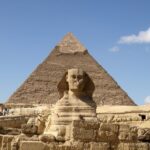
The mausoleum was an ancient pyramid that had been buried over the centuries, overseeing a period of economic growth during the dynasty. (Source from Wikipedia)
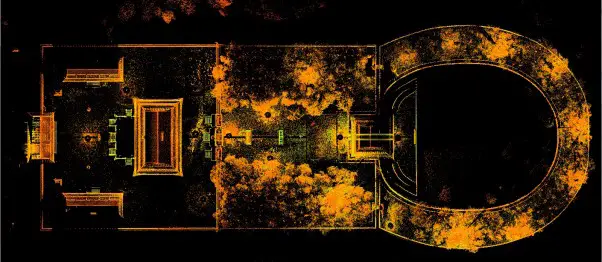

1. Qin Shi Huang Mausoleum 秦始皇陵
The Mausoleum of the First Qin Emperor (Qin Shi Huang) (Chinese: 秦始皇陵; pinyin: Qínshǐhuáng Líng) is located in Lintong District, Xi'an, Shaanxi province of China. This mausoleum was constructed over 38 years, from 246 to 208 BC, and is situated underneath a 76-meter-tall tomb mound shaped like a truncated pyramid. The layout of the mausoleum is modeled on the Qin capital Xianyang, divided into inner and outer cities. The circumference of the inner city is 2.5 km (1.55 miles) and the outer is 6.3 km (3.9 miles). The tomb is located in the southwest of the inner city and faces east. The main tomb chamber housing the coffin and burial artifacts is the core of the architectural complex of the mausoleum. The tomb itself has not yet been excavated. Archaeological explorations currently concentrate on various sites of the extensive necropolis surrounding the tomb, including the Terracotta Army to the east of the tomb mound. The Terracotta Army served as a garrison to the mausoleum and has yet to be completely excavated.
Qian Dynasty
Xi’an, Shaanxi
![qinshihuang-1[1]](https://hobbymart.net/wp-content/uploads/2022/03/qinshihuang-11.jpg)

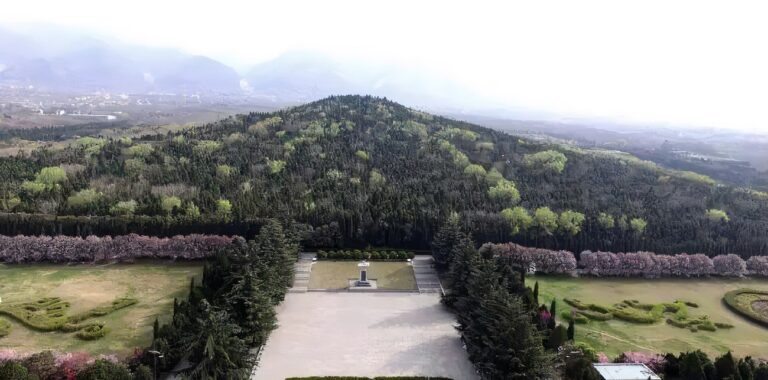
![Fotolia_108468323_Subscription_Monthly_M-1080x721[1]](https://hobbymart.net/wp-content/uploads/2022/03/Fotolia_108468323_Subscription_Monthly_M-1080x7211-1-768x513.jpg)
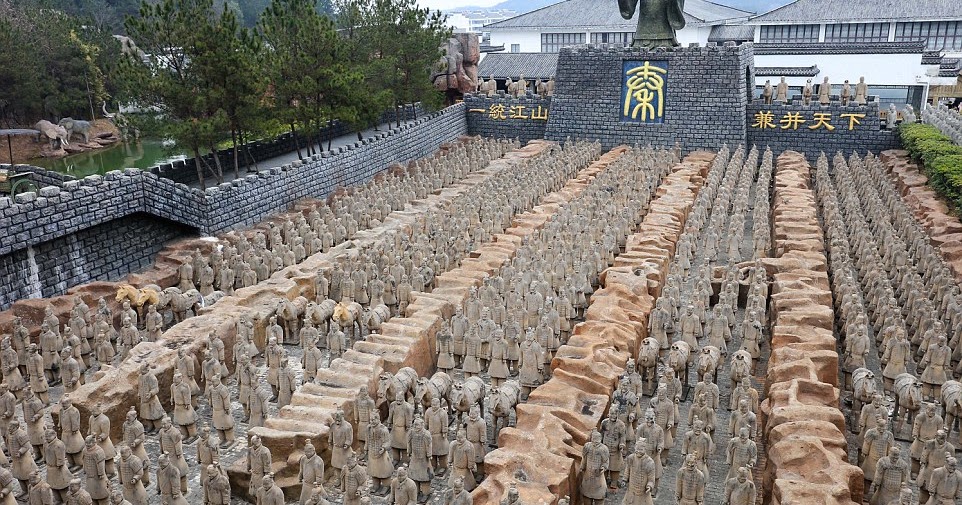

2. The Qianling Mausoleum 乾陵
The Qianling Mausoleum (Chinese: 乾陵; pinyin: Qiánlíng) is a Tang dynasty (618–907) tomb site located in Qian County, Shaanxi province, China, and is 85 km (53 mi) northwest from Xi'an. Built in 684 (with additional construction until 706), the tombs of the mausoleum complex house the remains of various members of the House of Li, the imperial family of the Tang dynasty. This includes Emperor Gaozong (r. 649–83), as well as his wife, Wu Zetian, who assumed the Tang throne and became China's only reigning female emperor from 690–705. The mausoleum is renowned for its many Tang dynasty stone statues located above ground and the mural paintings adorning the subterranean walls of the tombs. Besides the main tumulus mound and underground tomb of Emperor Gaozong and Wu Zetian, there are 17 smaller attendant tombs, or peizang mu. Presently, only five of these attendant tombs have been excavated by archaeologists, three belonging to members of the imperial family, one to a chancellor, and the other to a general of the left guard. The Shaanxi Administration of Cultural Heritage declared in 2012 that no further excavations would take place for at least 50 years.
Tang Dynasty
Xi’an, Shaanxi

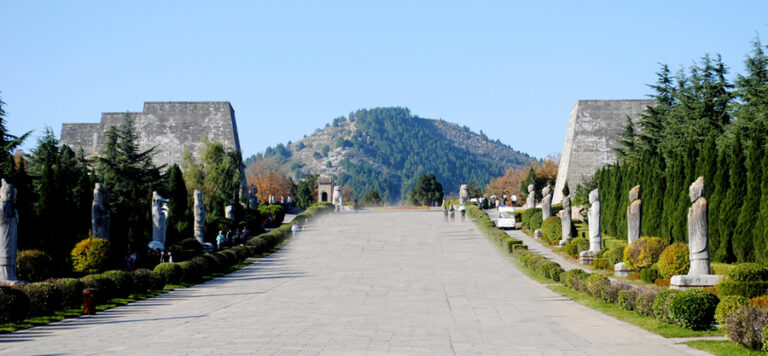
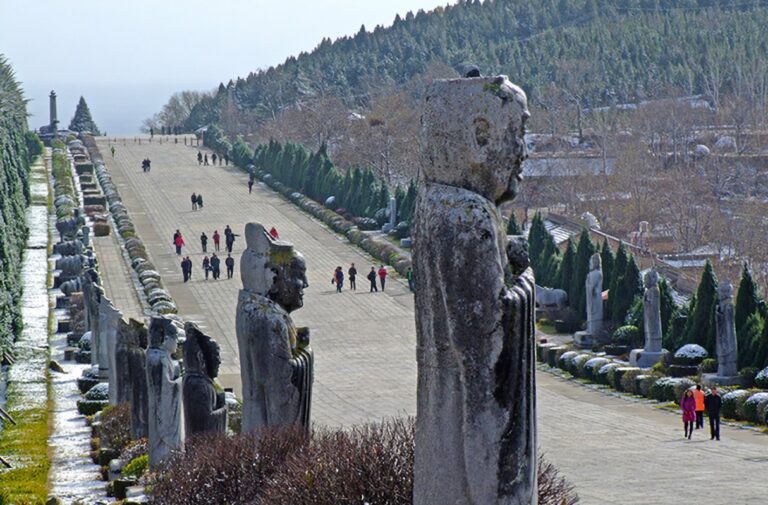
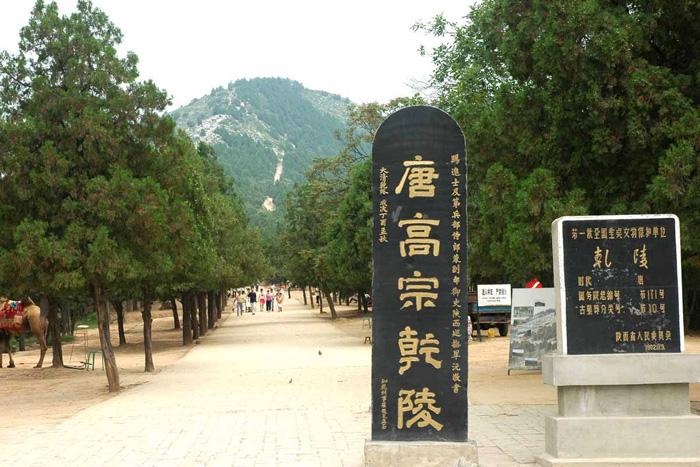


3. Mausoleum of Genghis Khan 成吉思汗陵
The location of the tomb of Genghis Khan (died August 18, 1227) has been the object of much speculation and research. The site remains undiscovered, although it is strongly implicated that the most likely location is somewhere in the vicinity of the Mongol sacred mountain of Burkhan Khaldun in the Khentii mountain range. The Genghis Khan Mausoleum is a temple dedicated to Genghis Khan in modern-day Inner Mongolia, but not his burial site.
Mongol
Mongol
![p598_d20130625100303[1]](https://hobbymart.net/wp-content/uploads/2022/03/p598_d201306251003031.jpg)
![Genghis_Khan_Mausoleum059d852aefa5_cut_800x500_61[1]](https://hobbymart.net/wp-content/uploads/2022/03/Genghis_Khan_Mausoleum059d852aefa5_cut_800x500_611-768x480.jpg)
![gk[1]](https://hobbymart.net/wp-content/uploads/2022/03/gk1-768x499.jpg)
![mausoleum-of-genghis-khan-01[1]](https://hobbymart.net/wp-content/uploads/2022/03/mausoleum-of-genghis-khan-011.jpg)

4. Ming Dynasty Tombs 明十三陵
The Ming tombs are a collection of mausoleums built by the emperors of the Ming dynasty of China. The first Ming emperor's tomb is located near his capital Nanjing. However, the majority of the Ming tombs are located in a cluster near Beijing and collectively known as the Thirteen Tombs of the Ming dynasty (Chinese: 明十三陵; pinyin: Míng Shísān Líng; lit. 'Ming Thirteen Mausoleums'). They are located within the suburban Changping District of Beijing Municipality, 42 kilometers (26 mi) north-northwest of Beijing's city center. The site, on the southern slope of Tianshou Mountain (originally Huangtu Mountain), was chosen based on the principles of feng shui by the third Ming emperor, the Yongle Emperor. After the construction of the Imperial Palace (Forbidden City) in 1420, the Yongle Emperor selected his burial site and created his own mausoleum. The subsequent emperors placed their tombs in the same valley. From the Yongle Emperor onwards, thirteen Ming emperors were buried in the same area. The Xiaoling Mausoleum of the first Ming emperor, the Hongwu Emperor, is located near his capital Nanjing; the second emperor, the Jianwen Emperor, was overthrown by the Yongle Emperor and disappeared, without a known tomb. The "temporary" emperor, the Jingtai Emperor, was also not buried here, as the Tianshun Emperor had denied him an imperial burial; instead, the Jingtai Emperor was buried west of Beijing. The last emperor buried at the location was Chongzhen, the last of his dynasty, who committed suicide by hanging on April 25, 1644. He was buried in his concubine Consort Tian's tomb, which was later declared as an imperial mausoleum Siling by the emperor of the short-lived Shun dynasty, Li Zicheng, with a much smaller scale compared to the other imperial mausoleums built for Ming emperors.
Ming Dynasty
Beijing
![1920px-Thirteen_tombs_entance_dagong_gate201909[1]](https://hobbymart.net/wp-content/uploads/2022/03/1920px-Thirteen_tombs_entance_dagong_gate2019091-768x431.jpg)
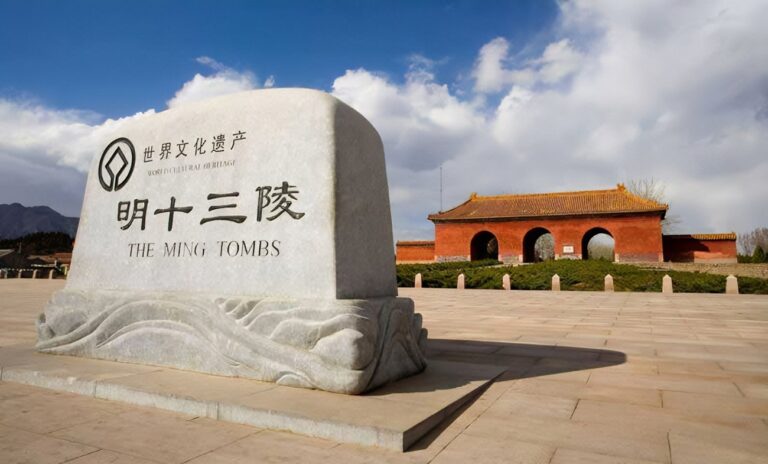
![imperial-1024x666[1]](https://hobbymart.net/wp-content/uploads/2022/03/imperial-1024x6661-1-768x500.jpg)
![Beijing+Ming+Graf+03[1]](https://hobbymart.net/wp-content/uploads/2022/03/BeijingMingGraf031-768x576.jpg)
![p125_d20181119133508_thumb_m[1]](https://hobbymart.net/wp-content/uploads/2022/05/p125_d20181119133508_thumb_m1.jpg)
![DinglingTomb[1]](https://hobbymart.net/wp-content/uploads/2022/05/DinglingTomb1-768x718.jpg)
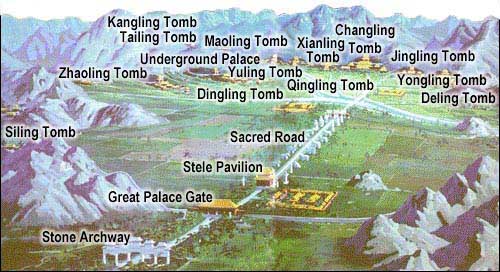
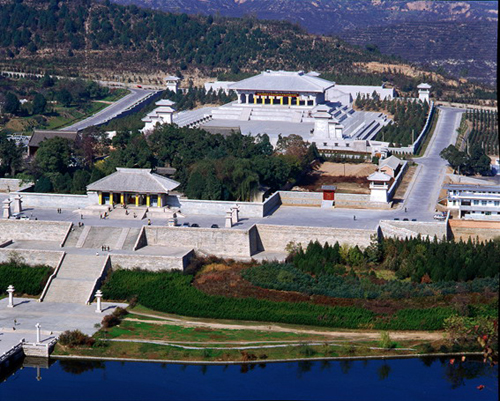
5. Huangdi Mausoleum 黄帝陵
The Mausoleum of the Yellow Emperor (simplified Chinese: 黄帝陵; traditional Chinese: 黃帝陵; pinyin: Huángdì Líng) is the alleged burial site of the legendary Yellow Emperor (Huangdi) of China. It is located in Huangling County, Yan'an City, Shaanxi Province, China. According to legend, the Yellow Emperor attained immortality and rose to Heaven, leaving behind only his clothing and cap to be entombed. The mausoleum is located on Qiao Mountain, north of Yan'an proper. In 1961, the Chinese State Council proclaimed it as the first National State-Protected Great Cultural Site, with the identifier "Ancient Tomb #1" and the moniker "The First Tomb Under Heaven". The mausoleum was anciently called "Qiao Tomb", and was an important location where generations of emperors and famous people made offerings to the Yellow Emperor. According to historical records, the earliest offerings to the Yellow Emperor at the mausoleum's location began in 442 BC. From the establishment of a shrine proper in the year 770 during the Tang dynasty, it was the scene of regular national offerings and sacrifices. The site has been rebuilt and restored several times, most recently beginning in 1993. The Yellow Emperor Mausoleum Foundation was established to raise money for the reconstruction process, which was divided into two phases. The first phase was completed in August 2001, and in 2004 yearly national offerings to the Yellow Emperor at the mausoleum resumed.
Yan’an City, Shaanxi

![Huangdi-Mausoleum-Tour-6-27[1]](https://hobbymart.net/wp-content/uploads/2022/03/Huangdi-Mausoleum-Tour-6-271-768x549.jpg)
![Huangdi(YellowEmperor)MausoleumScenicAreaAdmissionTicket[1]](https://hobbymart.net/wp-content/uploads/2022/03/HuangdiYellowEmperorMausoleumScenicAreaAdmissionTicket1-768x461.jpg)
![111018094335681[1]](https://hobbymart.net/wp-content/uploads/2022/03/1110180943356811.jpg)

![500px-A-Tomb_of_Emperor_Huangdi_in_Shaanxi[1]](https://hobbymart.net/wp-content/uploads/2022/05/500px-A-Tomb_of_Emperor_Huangdi_in_Shaanxi1.jpg)
![C-Tomb_of_Emperor_Huangdi_in_Shaanxi[1]](https://hobbymart.net/wp-content/uploads/2022/05/C-Tomb_of_Emperor_Huangdi_in_Shaanxi1.jpg)
![440px-Sacrificial_hall_of_the_Xuanyuan_Temple_in_Huangling,_Yan'an,_Shaanxi[1]](https://hobbymart.net/wp-content/uploads/2022/05/440px-Sacrificial_hall_of_the_Xuanyuan_Temple_in_Huangling_Yanan_Shaanxi1.jpg)
6. Ming Xiao Tomb Mausoleum 明孝陵
The Ming Xiaoling (Chinese: 明孝陵; pinyin: Míng Xiào Líng; lit. 'Filial mausoleum of Ming') is the mausoleum of the Hongwu Emperor, the founder of the Ming dynasty. It lies at the southern foot of Purple Mountain, located east of the historical centre of Nanjing. Legend says that in order to prevent robbery of the tomb, 13 identical processions of funeral troops started from 13 city gates to obscure the real burying site. The construction of the mausoleum began during the Hongwu Emperor's life in 1381 and ended in 1405, during the reign of his son the Yongle Emperor, with a huge expenditure of resources involving 100,000 labourers. The original wall of the mausoleum was more than 22.5 kilometres long. The mausoleum was built under heavy guard of 5,000 troops.
Ming Dynasty
Nanjing
![Ming3[1]](https://hobbymart.net/wp-content/uploads/2022/03/Ming31-768x512.jpg)
![ming-xiaoling-mausoleum-4[1]](https://hobbymart.net/wp-content/uploads/2022/03/ming-xiaoling-mausoleum-41.jpg)
![ming-xiaoling-mausoleum-5[1]](https://hobbymart.net/wp-content/uploads/2022/03/ming-xiaoling-mausoleum-51.jpg)
![Xiaoling-Tomb-of-Ming-Dynasty[1]](https://hobbymart.net/wp-content/uploads/2022/03/Xiaoling-Tomb-of-Ming-Dynasty1-768x467.jpg)
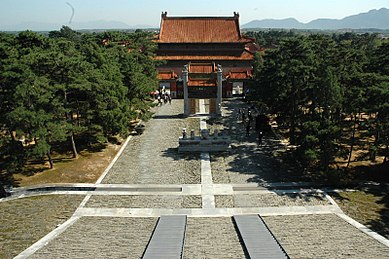
7. East and West Qing Tombs 清东西陵
The Eastern Qing tombs (Chinese: 清東陵; pinyin: Qīng Dōng líng; Manchu: are an imperial mausoleum complex of the Qing dynasty located in Zunhua, 125 kilometres (78 mi) northeast of Beijing. They are the largest, most complete, and best preserved extant mausoleum complex in China.[1] Altogether, five emperors (Shunzhi, Kangxi, Qianlong, Xianfeng, and Tongzhi), 15 empresses, 136 imperial concubines, three princes, and two princesses of the Qing dynasty are buried here. Surrounded by Changrui Mountain, Jinxing Mountain, Huanghua Mountain, and Yingfei Daoyang Mountain, the tomb complex stretches over a total area of 80 square kilometres (31 sq mi).
Qing Dynasty
Beijing
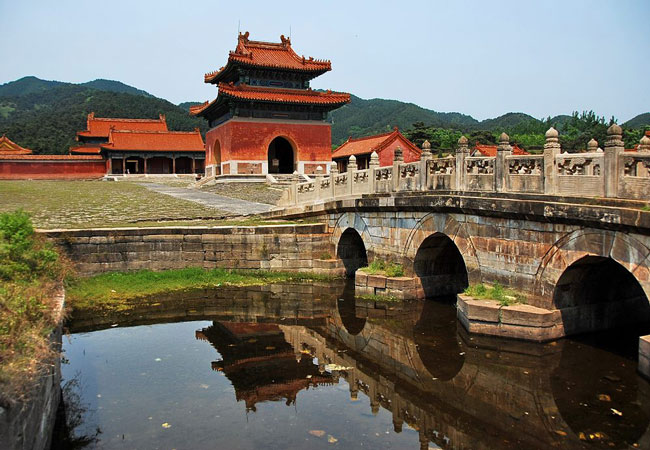
![East-Qing-Tombs_12[1]](https://hobbymart.net/wp-content/uploads/2022/03/East-Qing-Tombs_121.jpg)
![East-Qing-Tombs_1[1]](https://hobbymart.net/wp-content/uploads/2022/03/East-Qing-Tombs_11.jpg)
![East-Qing-Tombs_10[1]](https://hobbymart.net/wp-content/uploads/2022/03/East-Qing-Tombs_101.jpg)

8. The Imperial Mausoleum of Xixia 西夏王陵
Imperial Mausoleum of Xixia Dynasty's unique stone statues and architectures reminds many of the Easter Island. Try to catch a glimpse of the ancient nomad imperial's lives from the relics! Travel Tips one - location. It is located at the foot of Helan Mountain, 30 km. (19 mi.) west of Yinchuan City in Ningxia Hui Autonomous Region, consisting of 9 imperial tombs and 254 tombs of imperial relatives and officials. It's the one of the largest and well preserved imperial mausoleums in China. In 1988, it was listed as a key cultural site under national protection by the State Council. These hill-like yellow tombs look particularly spectacular scattering on a south-north axis. At present, you can still find remains of the ancient architectures such as turret, outer and inner city, stele pavilion and tower-shaped terrace. All of them are shrouded in a mysterious cultural atmosphere of the ancient times earning the Imperial Mausoleum of Xixia Dynasty (1038 - 1227) the reputation of being the "Oriental pyramid". Nowadays, Xixia Museum has been built to better preserve and showcase the culture and history of that historical period. The museum covers an area of 5,300 sq.m. (57,048 sq. ft.) with a unique and characteristic architectural style of Xixia Dynasty.
Xixia Dynasty
Yinchuan city
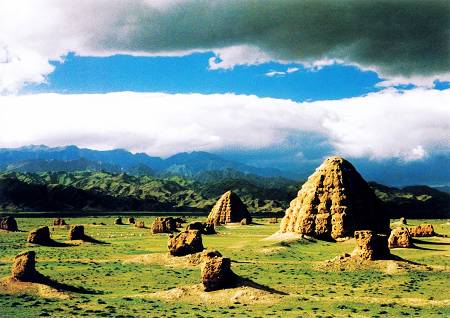
![western-xia-mausoleum[1]](https://hobbymart.net/wp-content/uploads/2022/03/western-xia-mausoleum1.jpg)
![Imperial_Mausoleum_of_Xixia_Dynasty[1]](https://hobbymart.net/wp-content/uploads/2022/03/Imperial_Mausoleum_of_Xixia_Dynasty1-768x512.jpg)
![western-xia-tombs-02[1]](https://hobbymart.net/wp-content/uploads/2022/03/western-xia-tombs-021.jpg)


9. Zhaoling Mausoleum 昭陵
Zhao Mausoleum (昭陵; pinyin: Zhāolíng; "Zhao" means the light of the sun) is the mausoleum of Emperor Taizong of Tang (599–649). It is located in Jiuzong Mountain, Shaanxi, China, it is the biggest mausoleum of the Tang Dynasty. Besides being the last resting place of Emperor Taizong of Tang it has additional 200 accompanied tombs around. The famous stone reliefs Six Steeds of Zhao Mausoleum are exhibited in the Stele Forest Museum of Xi'an (4 steeds) and Museum of the University of Pennsylvania, U.S. (2 steeds) separately. They were probably designed by the court painter and administrator Yan Liben, who is recorded as making other works for the mausoleum, and may have designed the whole mausoleum.[1] Planning began in 636 after the death of the Empress Zhangsun, who requested a simple burial.
Tang Dynasty
Jiuzong Mountain, Shannxi
![1534146847_oid_Zhaoling[1]](https://hobbymart.net/wp-content/uploads/2022/03/1534146847_oid_Zhaoling1.jpg)
![446x230px-Zhao_MausoleumQing_Dynasty14[1]](https://hobbymart.net/wp-content/uploads/2022/03/446x230px-Zhao_MausoleumQing_Dynasty141.jpg)
![shenyang_northern_mausoleum_6[1]](https://hobbymart.net/wp-content/uploads/2022/03/shenyang_northern_mausoleum_61-768x347.jpg)
![6365222654188744539572525[1]](https://hobbymart.net/wp-content/uploads/2022/03/63652226541887445395725251-768x432.jpg)

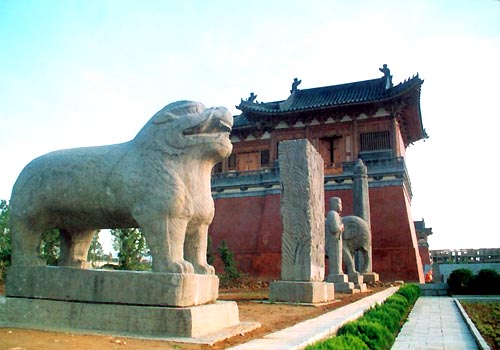
10. Imperial Mausoleums of the Song Dynasty 巩县宋陵
Mausoleums of Song Dynasty The Imperial Mausoleums of the Northern Song Dynasty (960-1279) are located at the piedmont of Wangling Mountain on the two banks of the Wuluo River in Gongxian County of Henan Province. The mausoleum is 15 km long from south to north, and 10 km wide from east to west. The mausoleum is 15 km long from south to north, and 10 km wide from east to west. Except the Emperor Huizong and Emperor Qinzong who were forayed by the Jin Dynasty (1115-1234) and died in the northern desert, the other seven emperors of the nine emperors in the Northern Song Dynasty were all buried here. In the first year (963) of the Qiande reign, the grave of the father of Zhao Kuangyin, who was the first emperor of the Song Dynasty, was moved here. There were seven emperors and eight mausoleums, which are the Yong'an Mausoleum of Emperor Xuanzu, the Yongchang Mausoleum of Emperor Taizu, the Yongxi Mausoleum of Emperor Taizong, the Yongding Mausoleum of Emperor Zhenzong, the Yongzhao Mausoleum of Emperor Renzong, the Yonghou Mausoleum of Emperor Yingzong, the Yongyu Mausoleum of Emperor Shenzong and the Yongtai Mausoleum of Emperor Zhezong. Empresses and imperial concubines were buried around each emperor's mausoleum, amounting to more than 20 people. There were more than 100 people buried with the emperor, and they were maharajas and ministers, including Kou Zhun and Bao Zheng.
Song Dynasty
Henan
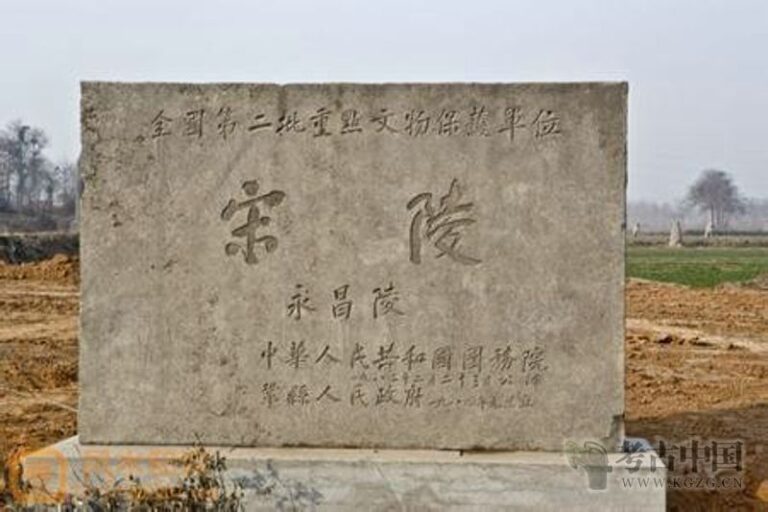
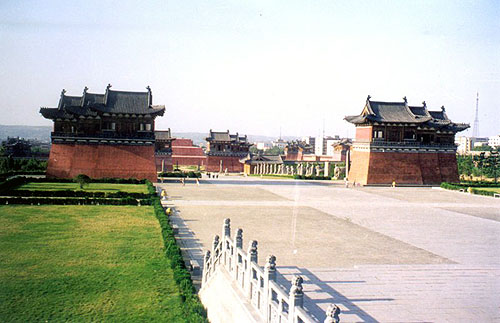
![114697[1]](https://hobbymart.net/wp-content/uploads/2022/03/1146971.jpg)
![img_475_d20130902102120[1]](https://hobbymart.net/wp-content/uploads/2022/03/img_475_d201309021021201.jpg)
![mausoleum-of-song-dynasty[1]](https://hobbymart.net/wp-content/uploads/2022/03/mausoleum-of-song-dynasty1.jpg)
![F810D69EACB2C084C8E554EB2F23581B9210A935_size498_w640_h427[1]](https://hobbymart.net/wp-content/uploads/2022/05/F810D69EACB2C084C8E554EB2F23581B9210A935_size498_w640_h4271.png)








